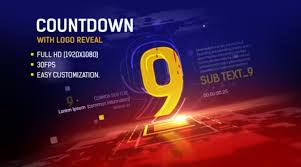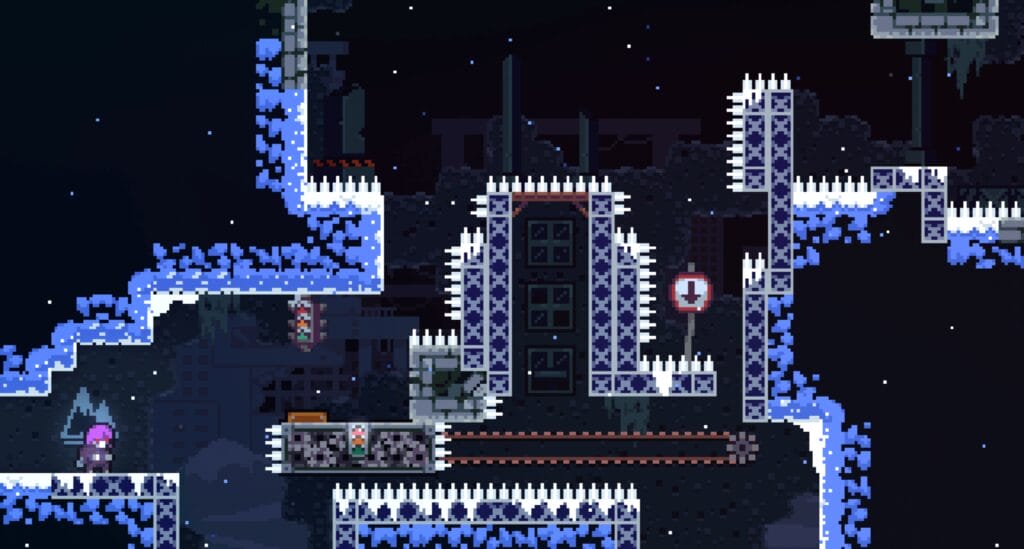An interesting tutorial on how to implement a Countdown Timer in Unity Game Engine
In this Unity C# tutorial I show you how to create a simple countdown timer using the Unity GUI system, creating a reset button and showing you how to optimise and extend the programming.
What is the is purpose of Countdown Timer in game design?
Countdown timers serve several important purposes in game design:
- Build Tension – Adding a visible countdown creates rising tension and urgency for the player. This can heighten engagement in key moments.
- Pace Gameplay – Timers force the player to act within a constrained period of time, pacing the gameplay and preventing stagnation.
- Limit Power-ups – Timers on power-ups or abilities limit how long they can be used, forcing strategic tradeoff decisions.
- Puzzle Pressure – Puzzle games often use timers to challenge players to think quickly under pressure.
- Race Against Time – Racing to disarm a bomb or escape a self-destruct sequence is a common trope using a countdown.
- Rhythm and Coordination – Countdowns allow coordinating gameplay to music or synchronizing group mechanics.
- Balance Resources – Timers balance overpowered mechanics by only allowing them occasionally or for short bursts.
- Signal Upcoming Events – A countdown can foreshadow an impending event like an attack wave spawn.
- Structure Object Lifecycles – Objects can exist briefly by destroying themselves after a timer expires.
By applying timers carefully, designers can ratchet up engagement, incentivize swift action, and punctuate key moments during gameplay. But if overused, timers can also feel punitive or frustrating to players. The duration and frequency must fit the intended effect.
Examples of countdown timers used in known games
Here are some examples of countdown timers used effectively in popular games:
- Super Mario Bros – The timer counts down from 400 to 0. It adds urgency and incentivizes speedrunning. Time running out means losing a life.
- The Legend of Zelda: Majora’s Mask – A persistent 3-day (72 hour) countdown until the moon crashes creates an ominous sense of urgency.
- Minecraft – A 5-10 minute countdown occurs at night before phantoms spawn, forcing players to occasionally sleep.
- Mario Kart – Some item powerups like Bullet Bill have a timer, limiting their overpowered effect.
- Plants vs. Zombies – The night wave countdown amps up tension before a huge onslaught.
- Keep Talking and Nobody Explodes – A visible bomb countdown creates extreme pressure for defusing it.
- Final Fantasy VII – Some battles have visible timers that require beating bosses quickly for full rewards.
- Super Smash Bros. – Sudden Death mode has a countdown before instant KO if no winner, forcing engagement.
- Destiny – Mission countdown timers challenge speedrunning them for top times.
- Dead Rising – Strict overall countdown emphasizes making tough time management choices.
These examples illustrate how countdowns are applied in clever, meaningful ways across many game genres and systems. They go far beyond just basic time limits to enhance games.
Implementing a Countdown Timer in Unity
Here is an in-depth guide on creating a robust, customizable countdown timer in Unity using C# code.

Displaying the Timer
Creating the Text UI
- Create a Text UI element in the scene to display the countdown text
- Set font size, color, and other stylistic preferences
Updating the Text
- In Update(), convert remaining time to a string and set Text.text
- Can format with string interpolation to add graphics, icons, etc.
Animating the Text
- Animate properties like scale and color over time for more impact
- Use LeanTween or Animator to animate text
Tracking Elapsed Time
Using Time.time
- Store start time on timer start and subtract from Time.time
- Handles pausing and resuming correctly
DateTime and TimeSpan
- Precisely track elapsed time using DateTime.Now
- TimeSpan gives exact duration remaining
Coroutines with WaitForSeconds
- Suspend coroutine over several seconds with yields
- WaitForSeconds pauses execution for delays
Implementing Core Functionality
Starting, Pausing, and Resuming
- Expose public methods to control timer state
- Toggle boolean flags to gate timer logic
Looping and Repeating
- Reset start time and elapsed time on complete
- Allow configuring repeat count or indefinite repeats
Completion Callbacks
- Trigger custom events when timer finishes
- Pass remaining time and other data to callbacks
Timer Speed and Direction
- Support both countdown and count up modes
- Modify speed with a time scalar variable
Additional Features
Saving and Loading
- Save remaining time when scene changes
- Restore time on load using Unity’s persistence
Audio and Visual Signals
- Play sounds or animate objects at key intervals
- Built-in support for warnings as time runs low
Difficulty and Gameplay
- Increase difficulty as timer elapses
- Spawn powerups to give more time
So in summary, these techniques allow implementing a wide range of countdown timer functionality to suit many game scenarios and systems.
Conclusion
Implementing robust countdown timers is a key skill for game developers working in Unity. The techniques covered in this article enable you to create flexible, customizable timers that can enhance urgency, pace gameplay, and punctuate key moments in your game.
While the basics involve tracking elapsed time and updating UI text, the options for expanding functionality are endless. You can integrate timers deeply into difficulty curves, spawn systems, audio design, and other key mechanics. Used thoughtfully, they become a tool for guiding the player experience rather than just a strict limit.
For added polish, explore visual and audio flourishes to make critical timers more impactful. Animate the display and accompany it with rhythmic sounds as time expires. This grabs player attention when you want to convey importance.
Hopefully this provides a solid foundation for adding quality timers that improve your next game. Let us know if you have any other questions! We’re always expanding our Unity tutorials and code samples, so check back regularly or subscribe for updates.
Now get out there, craft some great timers, and keep making awesome games!
FAQ Countdown Timer in Unity
Does Unity have a timer?
Yes, Unity provides a few different ways to implement timers:
- WaitForSeconds – This is a coroutine that pauses execution for a specified number of seconds before continuing. For example:
yield WaitForSeconds(2f); // Wait 2 seconds- Invoke – Call a method after a delay with Invoke. For example:
Invoke("SpawnEnemy", 5f); // Calls SpawnEnemy after 5 seconds- Timer class – Unity has a Timer class that allows creating countdown timers and triggering events at intervals. You can set durations, pause/resume, etc.
- Time.time – Get the time in seconds since the start of the game. Compare against a previously stored time to determine how much time has elapsed.
- Time.deltaTime – Reference the time interval between the current and previous frame. Often used for frame rate independent movement.
- DateTime – Use the DateTime struct to precisely track dates and times.
Some common uses of timers in Unity include:
- Countdown timers for power-ups or other temporary boosts
- Delaying spawn times for enemies or objects
- Creating cooldown periods before abilities can be reused
- Progress bars that fill over time
- Repeating events at regular intervals
- Game clocks to show time passing in-game
So in summary, Unity provides a full set of tools to implement timers that can trigger events and behaviors over time in your game. Both the Unity API and C# libraries have you covered for any timing needs.
How do you make a timed event in Unity?
Here are a few ways to create timed events in Unity:
- Use Invoke: Call a method after a delay by using Invoke. For example:
void SpawnEnemy()
{
// Spawn enemy
}
void Start()
{
Invoke("SpawnEnemy", 5f); // Spawns enemy after 5 seconds
}- Use coroutines: Suspend execution for a certain time by yielding WaitForSeconds in a coroutine:
IEnumerator SpawnRoutine()
{
yield return new WaitForSeconds(3f);
SpawnEnemy();
}
void Start()
{
StartCoroutine(SpawnRoutine());
}- Use Timer class: Create a timer that invokes callbacks at intervals. Allows pausing/resuming.
- Compare Time.time: Store the time at the start, compare against current Time.time to see if enough time elapsed.
- Use DateTime: Precisely schedule events using DateTime and TimeSpan.
- Update loop: Continuously check time and trigger events when thresholds are met.
Some examples of timed events:
- Spawn a wave of enemies every 10 seconds
- Open a door after player has been in the room for 1 minute
- Destroy an object 5 seconds after being created
- Cycle between day and night every 2 minutes
The key is tracking elapsed time and triggering logic when certain durations are reached. Unity provides flexibility to implement timers and timed events in various ways.
How do I show stopwatch in Unity?
Here are a few ways to display a stopwatch or timer in Unity:
- Text UI Component:
- Add a Text UI element to your scene.
- In your script, store the start time:
float startTime;
void Start() {
startTime = Time.time;
}- In Update(), calculate elapsed time and update text:
float elapsed = Time.time - startTime;
text.text = "Time: " + elapsed;- Image Fill Amount:
- Add an Image UI element.
- Calculate fill fraction between 0-1 based on elapsed time.
- Set Image.fillAmount to the fraction value.
- Slider UI Component:
- Add a Slider UI element.
- Set Slider.minValue to 0 and Slider.maxValue to timer duration.
- Update Slider.value based on elapsed time.
- CanvasGroup Fade:
- Fade a CanvasGroup in/out over time to create a countdown.
- Adjust alpha based on remaining time.
- Animator Parameters:
- Create an Animator with timer states.
- Transition between states based on elapsed time.
So in summary, you can get creative with Unity’s UI system, animation, and scripting API to display timers in different styles. Updating values for each frame is key to creating a real-time stopwatch effect.
How does a countdown timer work?
Here is an overview of how a countdown timer works:
- Get the starting time – When the timer starts, store the current time from the system clock. In Unity this would be Time.time.
- Calculate elapsed time – Each frame, the timer checks the current time again and calculates the difference between the current time and the starting time. This gives the elapsed time.
- Compare to target duration – The elapsed time is compared against the total duration the timer should count down from. For example, if it’s a 1 minute timer, the duration is 60 seconds.
- Calculate time remaining – To get the countdown display, the timer takes the total duration and subtracts the elapsed time. This gives you the time remaining.
- Update UI – The string or numeric display of the remaining time is updated each frame as the value counts down towards zero.
- Trigger event at end – Optionally, the timer can trigger an event when the remaining time reaches zero, like calling a method or deactivating a game object.
- Repeat or loop – For a repeating timer, the process starts over once the duration is reached. The start time is reset on each loop.
Key points:
- Needs real-time tracking of elapsed time.
- Duration is known so counting down is possible.
- Display and events update each frame.
- Can repeat by resetting start time.
This process allows creating countdowns and timers for events in games, especially with Unity’s time API.
What is time time () in Unity?
The Time.time property in Unity returns the time in seconds since the start of the game.
Some key points about Time.time:
- It starts at 0 when the game begins and increments each frame based on the frame rate.
- It is a floating point value, so it can have decimal fractions of a second.
- It continues counting up over the course of the game’s runtime.
- It is independent of wall clock time. Time.time will progress faster or slower depending on frame rate.
- It can be used to determine how much time has passed between events. For example:
float start = Time.time;
// Later...
float elapsed = Time.time - start; - It is often used as a simple game clock to trigger events over time.
- It can be used for movements that need to be frame rate independent.
- Time.deltaTime between frames will give you the elapsed time each frame.
- It is measured in seconds, so you may need to multiply to get minutes, hours, etc.
- It pauses when gameplay is paused and resumes when unpaused.
So in summary, Time.time gives you a constantly increasing value you can use to implement timers, delays, cooldowns, and other time-based behaviors in your Unity games. It’s a core built-in time tracking tool.
How do I add a time delay in Unity?
Here are a few ways to add time delays in Unity:
- WaitForSeconds
The WaitForSeconds coroutine suspends execution for a specified time. For example:
yield return new WaitForSeconds(2f); // Wait 2 seconds- Invoke
Call a method after a delay using Invoke:
Invoke("DelayedMethod", 5f); // Call DelayedMethod after 5 seconds- Timer
Create a timer that invokes callbacks at intervals:
timer = new Timer(1000); // 1000ms interval
timer.Elapsed += OnTimerElapsed;- Time.time
Store the start time and check Time.time to see if enough time passed:
startTime = Time.time;
if (Time.time - startTime >= 5f){
// 5 seconds elapsed
}- Thread.Sleep
Pause execution on the current thread for an amount of time:
Thread.Sleep(2000); // Pause for 2000 millisecondsSo in summary, WaitForSeconds, Invoke, Timer, Time.time, and Thread.Sleep allow you to delay code execution and create time buffers between events in your Unity game.






















